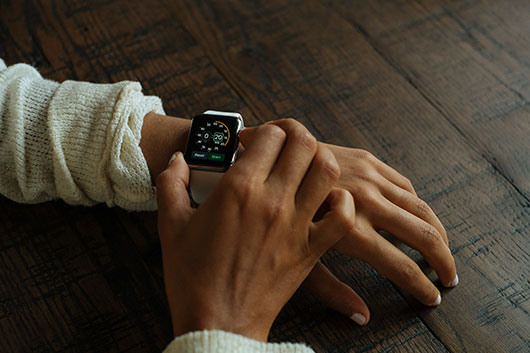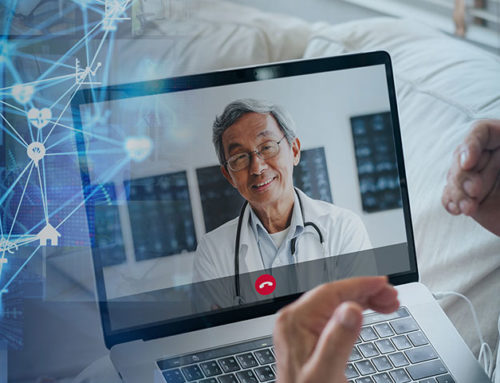It is estimated that over 38 million wearable devices will be sold by the end of 2016. More and more people are using this option to monitor their health. How will this affect people’s health? And how will it affect health care in general? Let’s take a look at what these devices can do for us and what that means.
Devices
There are a variety of devices on the market today that are giving people more real time insight into their health which had not been so easily available in the past. These devices take a number of different shapes and forms which we will review below:
Cell Phones – The most popular and common “wearable” device that most people currently use is actually their cell phone with out-of-the-box health and fitness tracking software silently running on their phones. For Apple products, most come installed with Apple Health and for Android products, installed on many is Google Fit. Not only can these apps track things like steps and heartbeat, but they can also integrate with a variety of other apps to track specialized information such as sleeping patterns, nutritional/diet information, body measurements and reproductive health.
Watches, Bracelets and Clip-ons – Second to the cell phone health and fitness apps, we have watches, bracelets and clip-ons which are what most people commonly associate with wearable devices. Though the Fitbit is still the most popular option on the market today, there is heavy competition coming from brands such as Apple (Apple Watch), Garmin (Garmin Vivoactive HR/HR+) and Samsung (Samsung Gear Fit2). These products can range from very basic step counters to fully loaded smart watches with features such as wireless capabilities, caller-ID, text notifications, music control, constant heart rate monitoring, and GPS.
Emerging Technology – Breaking out of the more common wearable technology in the form of cell phones and watches/bracelets/clip-ons, we have a variety of new forms of wearable technology coming into the market. Some examples of new technology which debuted at the annual Consumer Electronics Show this year are:
- Sunglasses, such as the RightEye, which measure vision performance. This information can be used to assess eyesight and even detect concussions!
- Wearable clothing, such as produced by the company Hexoskin. Hexoskin has created biometric shirts that have sensors woven into the fabric for measuring your heart rate, pace, breathing rate and volume, steps taken, calories burned and sleep.
- Smart footwear, such as the DigitSole shoes made by a company called Zhor. Not only do they measure steps taken and calories burned, but they also warm your feet! The DigitSole shoes charge wirelessly and send data via Bluetooth to a compatible smartphone app.
Implications to Healthcare
There are a lot of benefits to wearable devices in healthcare. The first and most obvious benefit is that people will lose weight due to more activity. This helps with people’s general health as well. Meeting a certain goal of steps walked will ultimately be good for the heart and muscles, as well as the waistline. These wearable devices encourage people to go out and walk more. They also encourage people to compete a bit. Most apps offer a feature to see if your step count is higher or lower than your friends. If you see that someone in the office is walking more than you every day, you may be motivated to walk a bit more yourself.
These wearable devices have a lot of features on them! One feature that many share is that they monitor sleep patterns. People with sleep disorders can use this information to help the doctor diagnose the problem and treat it properly.
Wearing a constant heart rate monitor is probably the most useful feature on the device for doctors. There are a number of reasons why a person’s heart rate might spike during a certain period of time. Seeing a consistent tracking of a person’s heart rate all day could give a doctor a much better indication of how serious a person’s problem may be. Heart conditions are one of the leading causes of death, and wearable devices can help us discover a heart problem earlier than was previously possible
Wearable devices can also be utilized in the future to help make the world a safer place. Innovators are also trying to create wearable devices that allow people to call for help when they are in a dangerous situation; similar to some of the medical alert system you see on the market today for senior citizens.
One potential problem to consider though is that wearable devices are not HIPAA compliant. HIPAA is a strict set of standards that doctors must take to ensure a patient’s information is kept confidential. There are specific laws for HIPAA compliance in how a patient’s information is stored at the office and even how things are handled electronically. Wearable devices are not HIPAA compliant and not covered by doctor/ patient confidentiality. Experts in the wearable device space also bring up fears that insurance companies may try to buy and use this information in the future which could impact the price and availability of healthcare for individuals.
Wearable devices are a great way for people to monitor their activity and their general well-being. The wearable device won’t lose the weight for you, but it will definitely encourage you to lose more as well as be conscious of how your body is reacting in different situations. Make it fun and look at it as a way to improve your life!




